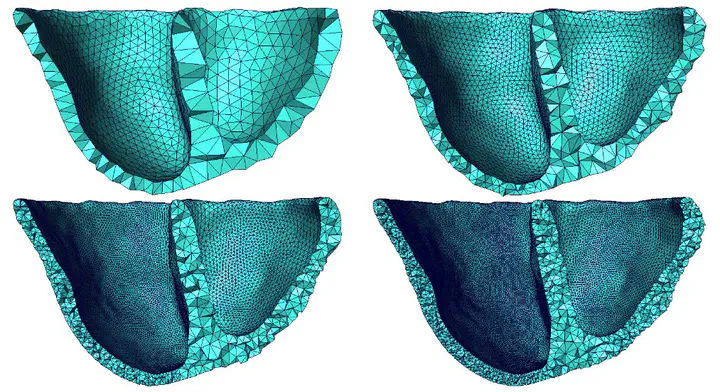
Abstract
Personalized simulation for therapy planning in the clinical routine requires fast and accurate computations. Finite-element (FE) simulations belong to the most commonly used approaches. Based on medical images the geometry of the patient’s anatomy must be faithfully represented and discretized in a way to find a reasonable compromise between accuracy and speed. This can be achieved by adapting the mesh resolution, and by providing well-shaped elements to improve the convergence of iterative solvers. We present a pipeline for generating high-quality, adaptive meshes, and show how the framework can be applied to specific cardiac simulations. Our aim is to analyze the meshing requirements for applications in electrophysiological modeling of ventricular tachycardia and electromechanical modeling of Tetralogy of Fallot.